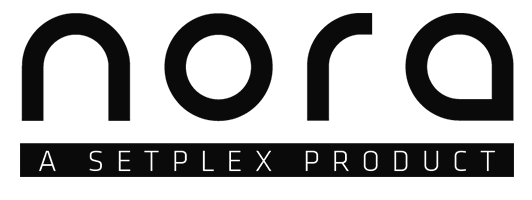What Is Video Management Software?
Video management software (VMS) is a comprehensive system for managing, storing, and analyzing video recordings from surveillance cameras, webcams, and other sources. It is a critical tool for any modern security system since it plays an important part in the security and monitoring of both residential and commercial property.
VMS's user-friendly interface and extensive features simplify the process of shooting, organizing, and retrieving video material, giving users a strong tool for managing their surveillance demands. One of the key responsibilities of a video management system is to allow for the live viewing and recording of several cameras concurrently. This enables customers to monitor their whole premises from a single platform, improving situational awareness and response times.
Furthermore, VMS provides a number of customizable capabilities, such as motion detection, time-lapse recording, and event-triggered alerts, allowing users to personalize their surveillance to individual requirements. In addition to live viewing, VMS provides sophisticated video replay and analysis capabilities. With its comprehensive search and filtering options, users can rapidly locate and review certain chunks of film, saving time and effort.
The software also allows users to download video recordings and share them with other parties, such as law enforcement, which simplifies evidence collection. Security is a primary issue for VMS, thus the software includes numerous levels of protection to safeguard the integrity of video recordings. This includes encryption, user authentication, and role-based access control, all of which contribute to preventing unauthorized viewing or manipulation with video recordings.
When considering acquiring VMS, it is critical to analyze the software's scalability and compatibility. Many VMS providers provide flexible license plans, allowing the system to expand as surveillance requirements rise. It is also critical to ensure that the software works seamlessly with the current security infrastructure, such as cameras and storage devices.
What Are The Recent Trends In Video Management Software?
Video management software (VMS) is an essential tool for organisations of all sizes and sectors to effectively manage and use their video surveillance systems. As technology advances, the landscape of video management software evolves and adapts to meet the needs of today's enterprises.
Let's explore, the latest trends in video management software to help you make an informed decision when selecting the best VMS for your organisation.
1. Cloud-Based Solutions: One of the most significant changes in video management software is the migration to cloud-based solutions. Businesses are increasingly relying on cloud-based services for storage and data administration, so video management should follow suit. Cloud-based video management systems (VMS) provide easy access to live and recorded video from any place, making them suitable for enterprises with numerous sites or remote monitoring needs. It also eliminates the need for large on-site servers, which lowers hardware and maintenance expenses.
2. Artificial Intelligence And Analytics: With the evolution of artificial intelligence (AI) and machine learning, video management software can now analyse and handle enormous amounts of video data in real time. This not only improves security and monitoring, but it also provides vital insights for organisations to make better decisions. Some of the most important AI and analytics technologies to look for in a VMS are facial recognition, license plate recognition, and people counting.
3. Mobile Integration: In today's fast-paced world, businesses must have access to their video surveillance systems on the go. Mobile integration has been a popular feature in VMS, letting users to view live and recorded video footage on their smartphones or tablets. This allows for greater flexibility and convenience, as well as the capacity to respond rapidly to any security alerts or issues.
4. Integration With Other Systems: Another significant trend in VMS is the integration of other systems such as access control, alarm systems, and sensors. This enables a more complete security system in which all components operate together seamlessly. A VMS that can interact with other systems also enables for automation, which reduces the workload of security staff while increasing overall efficiency.
5. User-Friendly Interfaces: As video management systems evolve, they might become more sophisticated and harder to use. However, the trend is towards more user-friendly interfaces, which make it easier for customers to control their video surveillance systems. Look for a VMS with a clear, intuitive interface, as well as customisable dashboards and reports, to guarantee that all users can use it easily.
Benefits Of Using Video Management Software
Video management software (VMS) has emerged as a vital tool for businesses and organisations seeking to streamline and improve existing video surveillance systems. VMS is a comprehensive software package that enables users to manage, watch, and save video footage from various security cameras.
Whether you're looking for a new VMS or want to enhance your current system, here are the top advantages of employing video management software to consider.
1. Centralised Monitor: One of the primary benefits of adopting VMS is the ability to monitor and manage all of your video content from a single, centralised platform. This allows you to monitor and access footage from many cameras in real time, making it easier to detect and respond to potential security risks.
2. User-Friendly Interface: VMS software has a simple interface that allows even non-technical people to explore and control the system. This enables organisations to swiftly train their employees and guarantees that the system is used effectively.
3. Customisation Options: VMS recognises that each firm has distinct surveillance needs. That's why most VMS software includes customisation options, allowing customers to personalise the system to their individual needs. This includes capabilities like motion detection, video analytics, and remote monitoring, resulting in a tailored and complete security solution.
4. Scalability: As businesses develop, their security requirements change. VMS software is scalable, which means that the system may be expanded as needed to accommodate more cameras and feature improvements, without requiring a major rebuild.
5. High-Quality Video Management: VMS software provides high-quality video management features. With capabilities such as frame-by-frame playback, extensive search options, and event-based recording, users can easily manage and analyse video content.
6. Secure Data Storage: VMS software provides secure data storage solutions to protect your video footage from theft or destruction. Businesses may access and recover film anytime they need it by storing it in the cloud or on a local server.
7. Integration With Other Systems: VMS software can be integrated with other security systems, such as access control and alarm systems, to provide a complete security solution for enterprises.
Important Factors To Consider While Purchasing Video Management Software?
When it comes to managing your company's video content, the correct Video Management Software (VMS) is required. With so many options on the market, it can be difficult to determine which one is ideal for your company's needs.
To assist you with the decision-making process, below are some crucial considerations to consider while purchasing VMS:
1. Scalability And Flexibility: Before making a purchase, examine your company's long-term growth and expansion goals. A scalable and versatile VMS will be able to meet your rising video needs and adapt to new technologies.
2. Video Storage And Retrieval: The efficient storage and retrieval of movies is an important part of VMS. Look for software that has enough of storage and allows you to easily search and retrieve specific films based on metadata or keywords. This will save you time and effort while organising your video library.
3. Security And Access Control: In today's digital world, safeguarding sensitive video footage is critical. The VMS you select should have strong security measures in place, like as encryption, user access limits, and multi-factor authentication, to safeguard the safety and confidentiality of your footage.
4. Integration And Compatibility: When picking a VMS, ensure that it can work with your existing systems, such as security cameras, video analytics, and other business applications. This will provide a smooth and simplified operation, maximising the usefulness of your VMS.
5. User-Friendly Interface: A user-friendly interface is critical to the smooth running of your VMS. Look for software with a straightforward and intuitive interface that your staff will find easy to explore and utilise. This will reduce training time and increase production.
6. Technical Support And Updates: Select a VMS vendor who provides consistent technical support and software updates. This will ensure that your VMS is running at peak performance and that you have access to the most recent features and security updates.
7. Cost: When choosing a VMS, consider your budget. While cost should not be the sole consideration, it is critical to select software that gives good value for money and corresponds with your business objectives.
What Are The Key Features To Look For In Video Management Software?
When selecting Video Management Software (VMS), numerous critical elements should be addressed to achieve the greatest fit for your individual requirements. These capabilities will not only increase the software's usability and functionality, but will also help you manage and secure your video recordings more effectively.
1. User-Friendly Interface: One of the most crucial aspects of a VMS is the user interface. It should be intuitive, visually beautiful, and simple to use for people of all skill levels. A cluttered or confusing interface can cause confusion and make it difficult to control video material.
2. Scalability: As your firm expands, so will your demand for a VMS. As a result, it is critical to select software that can readily scale with your organisation while maintaining performance. Look for flexible licensing choices and the ability to add more cameras as needed.
3. Compatibility: Before purchasing a VMS, make sure it is compatible with your current cameras and other hardware. This will save you time and money in the long run because you will not need to replace your existing equipment.
4. Live View And Playback: Any video management system must provide real-time monitoring and playback capabilities. This enables you to respond swiftly to questionable activities and collect film for evidence or investigation.
5. Video Analytics: Video analytics is an important tool that employs algorithms to analyse video data automatically. This includes facial recognition, object tracking, and motion detection, which can help save time when manually examining hours of film.
6. Mobile Accessibility: In today's fast-paced environment, having access to video footage while on the go is critical. Look for a VMS that is mobile compatible, so you can monitor your business from your smartphone or tablet.
7. Customisation And Automation: When it comes to video footage management, each organisation has its own set of requirements. A VMS with customisable settings and automated operations can reduce time and effort, resulting in a more effective workflow.
8. Integration With Third-Party Systems: Choose a VMS that can work with other security systems, such as access control or alarm systems. This enables a more complete security solution and easier management of all systems in a single platform.
9. Data Encryption And Security: It is critical to ensure the security of your video recordings. Look for a VMS that has data encryption and other security features to safeguard your data from any cyber threats.
10. Technical Assistance And Training: Finally, assess the quality of technical assistance and training provided by the VMS supplier. Ensure that there is solid technical support accessible in the event of an issue, as well as training to assist you get the most out of your VMS.
Why Do Businesses Need Video Management Software?
Video management software (VMS) is becoming an increasingly important tool for organisations of all sizes and industries. This powerful software enables organisations to manage their video surveillance systems in an efficient and effective manner, making it an invaluable tool for security, operations, and overall company efficiency. One of the primary reasons why businesses use video management software is to improve security measures.
Businesses may use VMS to monitor and manage their video surveillance cameras in real time, allowing them to keep an eye on their facilities and respond to potential security risks promptly. Furthermore, VMS enables easy access and organisation of video recordings, making it simple to recover evidence for investigations if needed. Aside from security, VMS provides several operational benefits to enterprises.
It enables firms to quickly monitor and analyse their operations, as well as find opportunities for development. Businesses can utilise video management software to evaluate footage and detect inefficiencies or process bottlenecks, allowing them to optimise operations and boost productivity. Furthermore, VMS allows organisations to remotely manage and operate their video surveillance systems.
This function is especially valuable for firms with several locations, allowing them to monitor and control all of their sites from a single place. This saves time and effort while also providing a more complete picture of their activities. Another benefit of adopting video management software is its scalability. As businesses develop and expand, their video surveillance requirements may also rise.
Businesses may quickly scale up their systems using VMS by adding extra cameras and storage capacity without disrupting operations, making it a cost-effective long-term solution. Furthermore, VMS includes additional tools like video analytics, which give businesses with vital insights into their operations. These insights can help organisations optimise their resources, cut expenses, and improve the overall customer experience.
How Much Time Is Required To Implement Video Management Software?
Implementing video management software (VMS) varies depending on your individual requirements and the software's sophistication. To achieve a seamless and successful deployment, the implementation process must be thoroughly planned and given adequate time. The projected time to adopt VMS ranges from a few weeks to many months. It covers the time required for installation, configuration, and user training.
The size and complexity of your organisation, as well as the number of cameras and locations, can all affect the deployment timeline. During the early stages of implementation, it is critical to involve all stakeholders, including IT teams, security personnel, and end users, to ensure that their needs and requirements are met. This can assist identify potential issues and streamline the deployment process.
Installation of VMS often takes a few days, depending on the number of cameras and equipment that must be linked. To ensure successful installation and connection with your existing systems, you will need the support of a technical specialist or vendor at this phase. The software's configuration comprises enabling user access control, creating user profiles, defining camera views, and customising alerts and notifications.
This can take anything from a few days to a few weeks, depending on how sophisticated your security configuration is. The final stage of implementation is user training. This is an important phase since it guarantees that all end users are comfortable using the software and getting the most out of its features. This can take anything from a few days to a few weeks, depending on the amount of people and their technological knowledge.
What Is The Level Of Customization Available In Video Management Software?
Video management software provides a variety of customisable capabilities to meet the unique requirements of its users. The extent of customisation provided varies by software provider, but some common features include the ability to build and save unique layouts, modify video quality and resolution, and add logos or watermarks. Creating personalised user profiles is an important part of video management software customisation.
This allows various users to access different features and levels of permissions, resulting in a safe and efficient video management system. Another facet of customization is the ability to adapt alerts and notifications to specific user preferences. This can include selecting which events trigger an alert, determining the frequency and mode of alerting, and specifying which users should receive certain alerts.
The ability to construct bespoke workflows is an advanced feature that some video management software may include. This enables users to create and automate certain operations, such as film archiving or camera recording scheduling, based on their own needs and requirements. In addition, several video management software companies allow for unique branding.
This includes the opportunity to customise the program interface with logos, colours, and other branding aspects, making it more personalised and professional. Overall, the level of customisation possible in video management software enables customers to personalise the system to their specific requirements and tastes. It also assures scalability as businesses expand and their video management requirements change. Before acquiring software, make sure you investigate and understand the level of customization available to ensure it meets your individual needs.
Which Industries Can Benefit The Most From Video Management Software?
In today's digital age, video management software has become an indispensable tool for a variety of sectors. This robust program has numerous features and benefits that can significantly improve an organization's video surveillance and security systems.
Let's look at which sectors will gain the most from video management software.
1. Retail: Video management software can provide significant benefits to the retail industry. With extensive video analytics and monitoring capabilities, this software can assist shops in detecting suspicious behaviour, identifying shoplifters, and preventing theft. It also enables simple monitoring of retail operations, assuring optimal efficiency and customer happiness.
2. Banking & Finance: Banking and finance are another industry that might tremendously benefit from video management software. This program includes strong security capabilities such as facial recognition, license plate recognition, and access restriction, which are critical for safeguarding sensitive financial data. It also monitors ATMs, branches, and offices in real time, assuring the highest level of security for both personnel and consumers.
3. Transportation: In the transportation business, video management software may significantly improve safety and security. This program, which supports live video streaming, automatic alarms, and multi-site monitoring, can aid in the administration of traffic, public transport, and railway systems. It also helps to track and monitor the movement of trucks and cargo, assuring timely deliveries and reducing theft.
4. Healthcare: Video management software can also be quite useful in the healthcare profession. With high-resolution cameras and extensive video analytics, this software can assist hospitals and clinics in monitoring patients, staff, and visitors. It can also help with emergency management, guaranteeing a timely reaction to any potential security risks.
5. Education: Educational organisations, such as schools and colleges, can use video management software to improve campus security. This software's motion detection, facial recognition, and perimeter control features can assist prevent unauthorised access and ensure student and staff safety. It also allows for remote monitoring of classrooms and common areas, which promotes a safe and secure learning environment.
6. Government Agencies: Government entities, including law enforcement, can tremendously benefit from video management software. With advanced capabilities such as video analytics, real-time alerts, and facial recognition, this software can help with crime prevention, crowd management, and emergency response. It also enables for the integration of several cameras from different locations, which improves situational awareness and aids investigations.
Conclusion
Finally, selecting the appropriate video management software for your organization can significantly improve your video surveillance capabilities. Before making a decision, be sure you have carefully considered your individual wants and expectations. To guarantee you invest in a dependable and effective solution, we recommend analyzing crucial elements such as cost, features, compatibility, and customer support.
Remember to consider the software's scalability and flexibility in order to allow future organizational development and change. Consider the software's level of security and data protection, as well as its ability to integrate with other systems. With a thorough study and understanding of your objectives, you can confidently choose video management software that suits your organization's specific demands and gives the capabilities required to properly manage and utilize your video surveillance footage. We hope that this buyer's guide has helped you make an informed selection.






















